The 1990 Mercedes-Benz 300SE, a symbol of automotive elegance and engineering prowess, was a standout in its time. This luxury sedan, a testament to German craftsmanship, captivated the world with its timeless design, opulent interior, and powerful performance. From its sleek exterior lines to its refined cabin, the 300SE epitomized the essence of a true luxury vehicle, offering a driving experience that was both comfortable and exhilarating.
The 300SE was not just a car; it was a statement of success, a symbol of prestige, and a testament to the enduring legacy of Mercedes-Benz. It was designed for discerning drivers who appreciated the finer things in life, offering a blend of comfort, luxury, and performance that was unmatched by its contemporaries.
The 300SE was a car that commanded attention, turning heads wherever it went.
The 1990 Mercedes-Benz 300SE: A Pinnacle of Luxury and Engineering
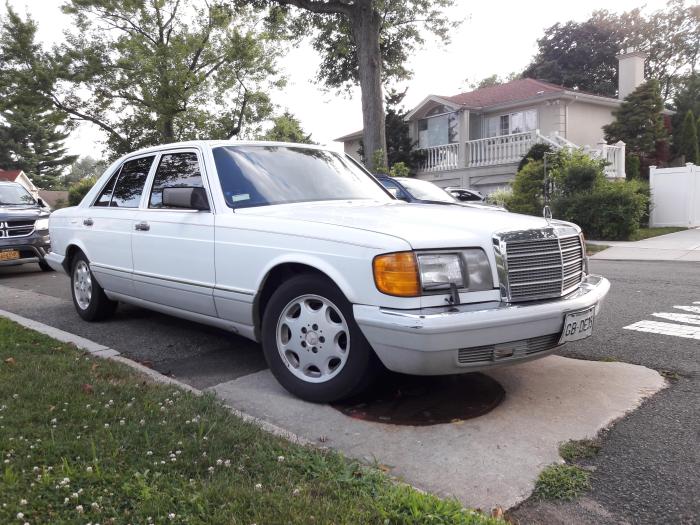
The 1990 Mercedes-Benz 300SE, part of the W126 model series, stands as a testament to German engineering prowess and luxury car craftsmanship. It represented the pinnacle of Mercedes-Benz’s efforts in the late 1980s, embodying a blend of advanced technology, refined design, and unparalleled comfort.
The 300SE catered to a discerning clientele seeking a car that exuded prestige and provided an exceptional driving experience.
Target Market and Key Features
The 1990 Mercedes-Benz 300SE was targeted at affluent individuals and families who valued luxury, performance, and safety. Its key features included:
- A powerful 3.0-liter inline-six engine delivering smooth and responsive performance.
- A luxurious interior featuring high-quality materials, spacious seating, and advanced amenities like power seats, climate control, and a premium sound system.
- A robust and sophisticated chassis designed for both comfort and handling, incorporating advanced suspension technology and a powerful braking system.
- A reputation for exceptional reliability and durability, a hallmark of Mercedes-Benz vehicles.
Design and Styling
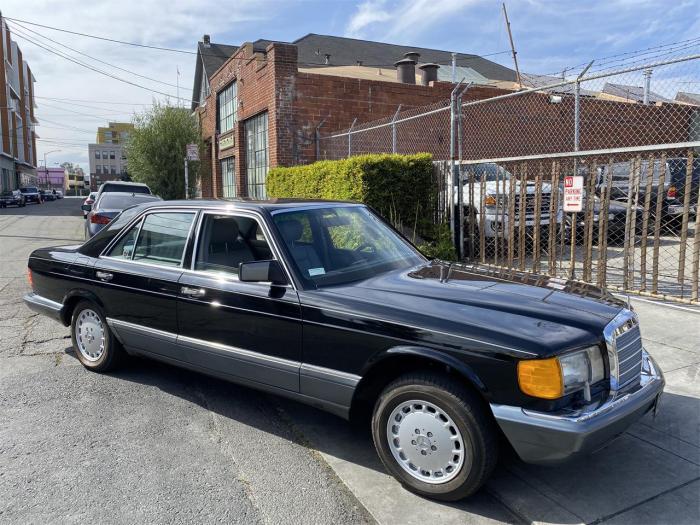
The 1990 Mercedes-Benz 300SE was a car that epitomized elegance and sophistication, both in its exterior design and interior appointments. Its timeless lines and luxurious features made it a true icon of its era.
Exterior Design
The 1990 300SE showcased the classic Mercedes-Benz design language of the time, characterized by smooth curves and a focus on aerodynamics. It sported a long hood, a raked windshield, and a gently sloping roofline, all contributing to a sleek and graceful profile.
The car’s body style was a four-door sedan, offering ample space for passengers and cargo.The 300SE’s dimensions were substantial, reflecting its luxury positioning. It measured 194.1 inches in length, 70.1 inches in width, and 56.3 inches in height, with a wheelbase of 112.2 inches.
These dimensions ensured a spacious and comfortable cabin for all occupants.Distinctive features that set the 300SE apart included its prominent grille with the iconic three-pointed star emblem, chrome accents on the bumpers and window trim, and the signature Mercedes-Benz taillights.
The car was available in a range of colors, allowing buyers to personalize their vehicles to their taste.
Interior Design
The interior of the 1990 300SE was a sanctuary of luxury and comfort. High-quality materials, such as leather upholstery, wood trim, and plush carpets, were used throughout the cabin. The seats were designed for maximum comfort, with adjustable lumbar support and generous padding.Technology was also a key focus in the 300SE’s interior.
Features like power windows, power locks, and an AM/FM cassette stereo were standard equipment. Some models were also equipped with an optional sunroof, cruise control, and a premium sound system.The 300SE’s dashboard was laid out in a driver-centric manner, with easy-to-read gauges and controls within reach.
The spacious cabin offered ample legroom and headroom for all passengers, making long journeys a truly enjoyable experience.
The 1990 Mercedes-Benz 300SE, a classic sedan, represented the pinnacle of German engineering at the time. While it exuded elegance and comfort, those seeking a more open-air experience might have gravitated towards its convertible counterpart, the 1984 Mercedes-Benz 380SL.
This roadster, with its timeless design and powerful engine, offered a taste of luxury and freedom. Returning to the 300SE, its robust build and refined interior made it a symbol of status and sophistication, a true testament to Mercedes-Benz’s commitment to quality.
Comparison with Other Mercedes-Benz Models
Compared to other Mercedes-Benz models of the same era, the 300SE positioned itself as a luxurious and refined option. While models like the 190E offered a more compact and sporty driving experience, the 300SE focused on providing a comfortable and opulent ride.The 560SEL, on the other hand, offered even more power and prestige, but came with a higher price tag.
The 300SE, therefore, struck a balance between luxury and affordability, making it a desirable choice for discerning drivers who valued both comfort and performance.
Performance and Handling: 1990 Mercedes-Benz 300SE
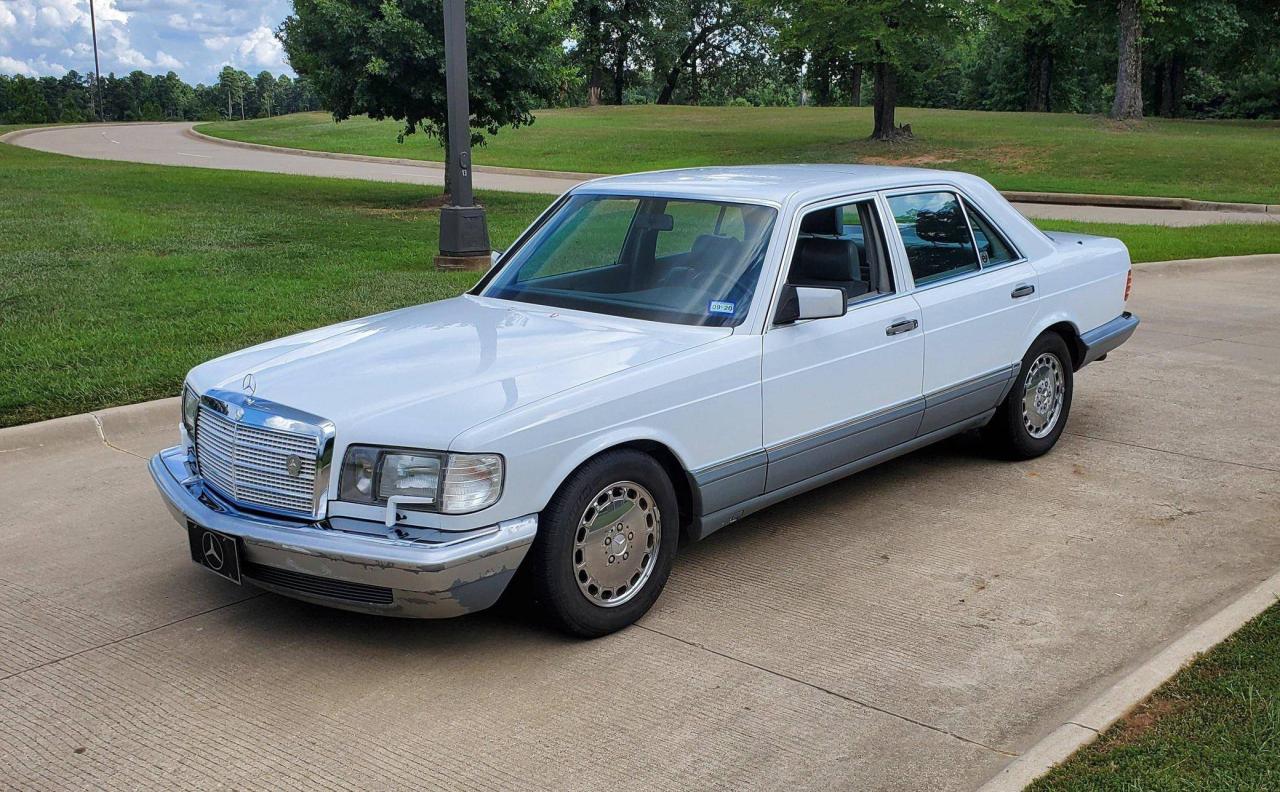
The 1990 Mercedes-Benz 300SE was a powerful and refined luxury sedan, known for its smooth performance and comfortable ride. Its combination of a potent engine, advanced suspension, and precise steering made it a joy to drive both on city streets and open highways.
The 1990 Mercedes-Benz 300SE, with its sleek lines and powerful engine, was a symbol of luxury and performance. But did you know that Mercedes-Benz has a rich history of creating iconic cars? Take the 1936 Mercedes-Benz 500K , for example, a masterpiece of engineering and design that set the stage for the brand’s future success.
Just like the 500K, the 300SE embodied the spirit of innovation and craftsmanship that defines Mercedes-Benz.
Engine Specifications and Fuel Economy
The 300SE was powered by a 3.0-liter, six-cylinder engine that produced 177 horsepower and 188 lb-ft of torque. This engine was known for its smooth and quiet operation, providing ample power for effortless acceleration and comfortable cruising. The engine was mated to a four-speed automatic transmission, which delivered smooth and responsive gear changes.The 1990 300SE achieved a fuel economy rating of 17 mpg city and 24 mpg highway, which was considered respectable for a car of its size and performance.
Transmission and Drivetrain Options, 1990 Mercedes-Benz 300SE
The 1990 Mercedes-Benz 300SE was equipped with a four-speed automatic transmission, which provided smooth and responsive gear changes. The transmission was known for its efficiency and reliability. The 300SE featured a rear-wheel drive system, which provided excellent traction and handling characteristics.
Handling Characteristics
The 1990 300SE was known for its comfortable and composed ride, thanks to its sophisticated suspension system. The car’s independent front and rear suspension provided excellent shock absorption and road isolation, making it a pleasure to drive on even the roughest roads.
The 300SE’s steering was precise and responsive, providing a good balance between comfort and control. The car’s handling was stable and predictable, even at high speeds.
Features and Technology
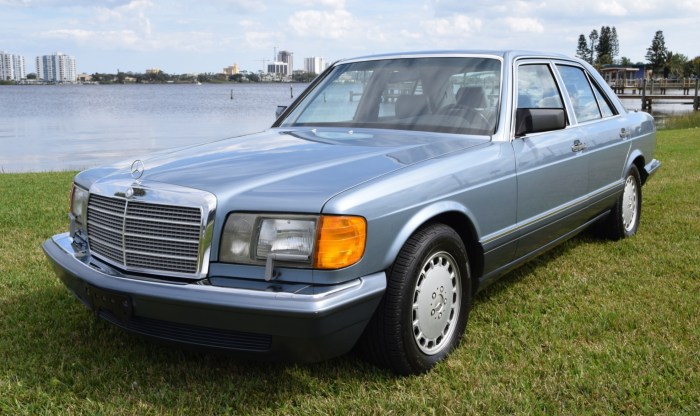
The 1990 Mercedes-Benz 300SE was a technological marvel for its time, showcasing a blend of luxurious features and advanced engineering. It offered a comprehensive suite of amenities and innovations that were considered cutting-edge in the late 1980s and early 1990s.
Standard Equipment and Optional Extras
The 1990 300SE came equipped with a range of standard features designed to enhance comfort, convenience, and safety. These included:
- Power-adjustable front seats: Providing personalized comfort and support for the driver and front passenger.
- Automatic climate control: Maintaining a comfortable temperature inside the cabin regardless of external conditions.
- Power windows and door locks: Adding convenience and ease of use.
- Cruise control: Maintaining a consistent speed for effortless highway driving.
- Anti-lock braking system (ABS): Enhancing braking performance and safety by preventing wheel lock-up during emergency braking.
- Airbags: Providing an extra layer of protection for the driver and front passenger in the event of a collision.
- AM/FM radio with cassette player: Offering entertainment options for passengers.
In addition to these standard features, the 300SE offered a variety of optional extras, allowing buyers to further customize their vehicles. These included:
- Leather upholstery: Enhancing the luxurious feel of the interior.
- Sunroof: Providing natural light and ventilation.
- Rear-window defroster: Ensuring clear visibility in cold weather.
- Power rear window shades: Providing privacy and sun protection for rear passengers.
- Telephone: A luxury feature for the time, allowing passengers to make calls while on the go.
Technology Comparison with Modern Vehicles
While the 1990 300SE was considered technologically advanced for its time, modern vehicles have surpassed it in many ways. Here are some key differences:
- Infotainment systems: Modern vehicles boast advanced infotainment systems with touchscreens, navigation, Bluetooth connectivity, and smartphone integration. The 300SE’s AM/FM radio and cassette player seem rudimentary by comparison.
- Safety features: Modern vehicles offer a plethora of advanced safety features such as lane departure warning, blind spot monitoring, adaptive cruise control, and automatic emergency braking. The 300SE’s ABS and airbags were groundbreaking in their time but are now considered standard in modern vehicles.
The 1990 Mercedes-Benz 300SE is a classic example of German engineering, known for its luxurious interior and powerful engine. While the 300SE embodies the pinnacle of luxury, it’s interesting to compare it to its predecessor, the 1973 Mercedes-Benz 280C.
The 280C, with its more understated styling, still offers the same renowned Mercedes-Benz reliability and comfort. Both cars showcase the brand’s commitment to quality, proving that even with different eras, Mercedes-Benz remains a symbol of automotive excellence.
- Engine technology: Modern vehicles feature more fuel-efficient and powerful engines with advanced technologies like direct injection, turbocharging, and hybrid systems. The 300SE’s naturally aspirated engine, while reliable, is less efficient and powerful compared to modern counterparts.
- Driving assistance systems: Modern vehicles offer a range of driver assistance systems such as parking assist, lane keeping assist, and traffic sign recognition. The 300SE did not have these features.
Safety and Reliability
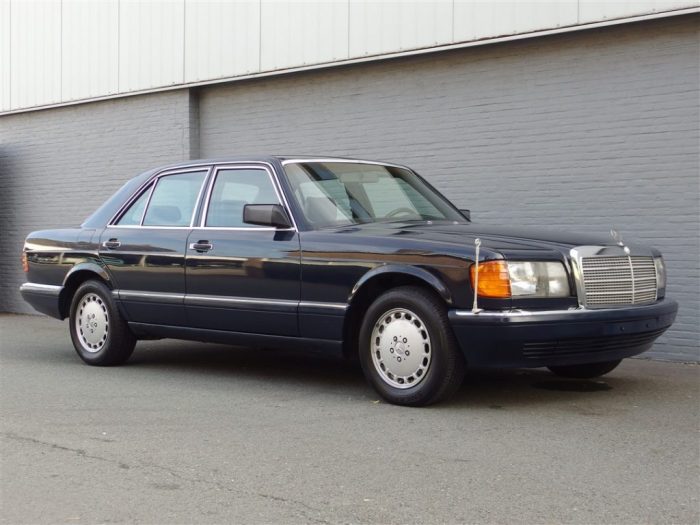
The 1990 Mercedes-Benz 300SE was renowned for its commitment to safety and its reputation for exceptional reliability, making it a desirable choice for discerning drivers seeking a combination of luxury and dependability.
Safety Features
The 1990 300SE incorporated a comprehensive suite of safety features designed to protect occupants in the event of an accident. These features included:
- Anti-lock Braking System (ABS):ABS helped prevent wheel lock-up during braking, providing enhanced control and stability, particularly in slippery conditions.
- Airbags:The 300SE was equipped with driver and passenger airbags, offering crucial protection in frontal collisions.
- Safety Cage Construction:The rigid passenger compartment, known as a safety cage, was designed to absorb and dissipate impact forces, protecting occupants from intrusion.
- Seat Belts:Three-point seat belts were standard equipment, ensuring secure restraint for all occupants.
- High-Mounted Stop Lamp:This feature improved visibility to following vehicles, reducing the risk of rear-end collisions.
Reliability and Durability
The 1990 300SE was built with meticulous engineering and high-quality materials, contributing to its reputation for exceptional reliability and durability. Mercedes-Benz vehicles of this era were known for their robust construction and long service life.
The 1990 Mercedes-Benz 300SE was a classic example of German engineering, known for its robust build and refined performance. If you’re looking for a more powerful option, consider the 1990 Mercedes-Benz 420SEL , which boasts a larger engine and a more luxurious interior.
Both models offer a timeless elegance and enduring quality, making them excellent choices for discerning drivers.
- Engine:The 3.0-liter inline-six engine was renowned for its smooth operation, reliability, and longevity. Regular maintenance ensured optimal performance for many years.
- Transmission:The 4-speed automatic transmission was known for its smooth shifting and durability, contributing to the car’s overall reliability.
- Body and Chassis:The 300SE’s robust body and chassis were built to withstand the test of time, minimizing the risk of rust and corrosion.
Comparison to Contemporaries
In comparison to other luxury cars of the same era, the 1990 300SE stood out for its comprehensive safety features and its reputation for reliability. While other manufacturers were beginning to introduce safety features like ABS and airbags, the 300SE offered a well-rounded package that prioritized both occupant protection and long-term dependability.
Cultural Impact and Legacy
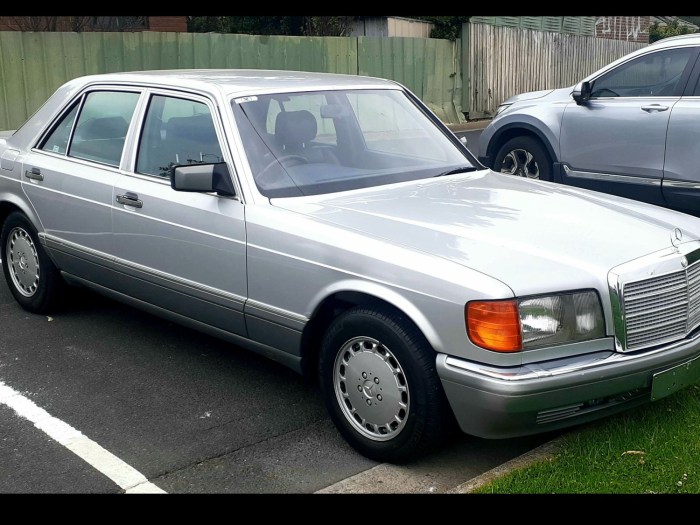
The 1990 Mercedes-Benz 300SE wasn’t just a car; it was a symbol of luxury, success, and engineering excellence. It left an indelible mark on popular culture, influencing subsequent Mercedes-Benz models and solidifying the brand’s position as a global automotive icon.
Influence on Popular Culture
The 1990 300SE’s sleek design and opulent interior made it a popular choice for Hollywood films and television shows. Its presence in movies like “The Wolf of Wall Street” and “Scarface” cemented its image as a vehicle associated with wealth and power.
Its distinct grille, sharp lines, and elegant proportions became synonymous with the Mercedes-Benz brand, influencing the design of subsequent models.
Influence on Subsequent Mercedes-Benz Models
The 1990 300SE’s design philosophy, characterized by its elegant curves and sophisticated detailing, laid the foundation for the brand’s future aesthetic. Its focus on luxurious comfort and advanced technology set the standard for subsequent Mercedes-Benz models. The W140 platform, which underpinned the 300SE, introduced innovative features like air suspension and advanced safety systems, which were subsequently adopted and refined in later models.
Significance in Automotive History
The 1990 300SE stands as a testament to Mercedes-Benz’s commitment to engineering excellence and luxurious design. Its innovative features, such as its advanced suspension system and powerful engine, pushed the boundaries of automotive technology. The car’s enduring popularity and its impact on subsequent Mercedes-Benz models solidified its place as a pivotal vehicle in automotive history.
Collector’s Value and Market Trends
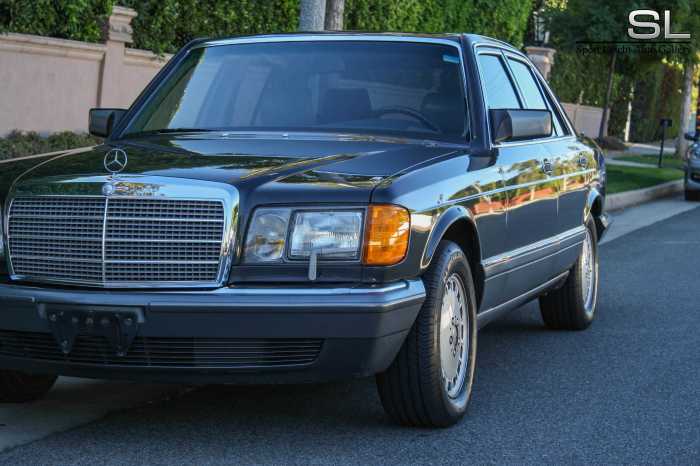
The 1990 Mercedes-Benz 300SE, a timeless classic, has steadily gained traction in the collector car market, attracting enthusiasts and investors alike. Its elegant design, luxurious interior, and robust engineering have ensured its enduring appeal, making it a desirable addition to any collection.
Factors Influencing Value
The value of a 1990 300SE is influenced by a combination of factors, including its condition, mileage, and rarity.
- Condition:A well-maintained and original 300SE with low mileage commands a premium price. Pristine examples, often documented with service records, are highly sought after. Conversely, cars with significant wear and tear, requiring extensive restoration, are valued lower.
- Mileage:Lower mileage generally translates to higher value, as it indicates less wear and tear on the car’s mechanical components. A 300SE with under 100,000 miles is considered desirable, while those with higher mileage may attract a lower price.
- Rarity:Certain options or special editions can make a 300SE more valuable. For instance, a 300SE with a rare color combination or a limited-production model, like the 300SE 4MATIC, may fetch a higher price than a standard model.
Current Market Trends
The collector car market for the 1990 300SE is experiencing a positive trend, with prices steadily increasing. This upward trend is driven by factors such as:
- Growing Interest:The popularity of classic Mercedes-Benz models is on the rise, attracting a new generation of enthusiasts. This increased interest is driving demand for well-preserved examples, including the 300SE.
- Investment Potential:The 1990 300SE is considered a solid investment, with the potential for appreciation over time. As the car becomes increasingly rare, its value is likely to continue to rise, especially for well-maintained examples.
- Nostalgia and Sentimentality:The 1990 300SE evokes a sense of nostalgia for many, representing a bygone era of luxury and engineering excellence. This sentimental value contributes to the car’s appeal and desirability.
Final Conclusion
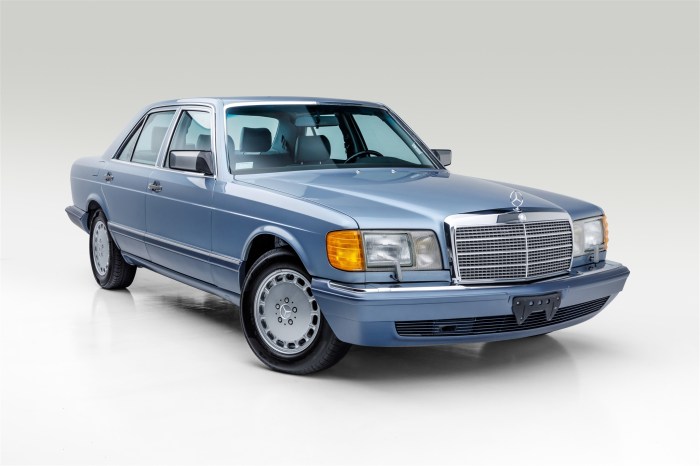
The 1990 Mercedes-Benz 300SE remains a timeless classic, a testament to the enduring legacy of German engineering and design. Its influence can still be seen in modern Mercedes-Benz models, a reminder of the brand’s commitment to excellence and innovation. Whether you’re a seasoned car enthusiast or simply appreciate the finer things in life, the 300SE is a vehicle that deserves to be admired for its historical significance, its enduring elegance, and its captivating driving experience.